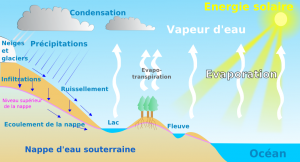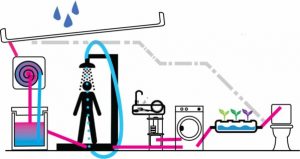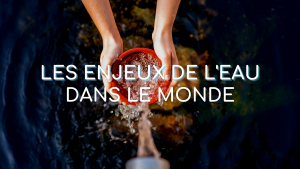Water issues on a global scale
Although 70% of our cherished blue planet is covered in water, only 1% of this is freshwater. Water is also unevenly spread across different parts of the world:
- 2.2 billion people have no access to drinking water in their homes
- two-thirds of the world’s population have faced serious water shortages
Thanks to population growth, intensive urbanization and climate change, every day this blue gold becomes a greater source of inequality in the world. Vital to the economy, the environment and education, sustainable water management is at the heart of international concerns.
Access to water
For the World Health Organization, access to water is a broad concept. Those considered to have access to water (89%) include people who have to make a round trip of up to 30 minutes. So, while 71% of the population has access to water at home at least 12 hours a day, 1.3 billion people (17% of the world population) are reported as having access to drinking water within 30 minutes. Although water is a fundamental human right, major inequalities remain, despite some progress being made.
The issue of sanitation
Did you know 4.5 billion people are still not connected to a sanitation system and some 1,000 children die every year from illnesses linked to unsafe water? An issue closely linked to drinking water accessibility, the lack of a safe sanitation system has devastating consequences on the environment and health. An estimated 673 million people still defecate outdoors, leading to the proliferation of bacteria and the transmission of disease. Improving access to toilets and handwashing facilities would help save hundreds of thousands of lives every year.
The impact of climate change on water
Climate change has a direct impact on the water cycle. Why? Because when temperatures rise, evapotranspiration also increases. This leads to there being more water vapour in the air and less in liquid form. That is why, for several years now, there has been an increase in the number of extreme weather phenomena such as flooding and long periods of drought.
Understanding the water cycle
The sun leads water to evaporate from oceans, lakes, rivers and plants into the air. This is known as evapotranspiration. Once in the air, this water vapour meets lower temperatures and undergoes a phenomenon known as condensation, in which small droplets form clouds. Finally, the small droplets grow larger until they fall as rain or snow. This phase is called precipitation. Rain and snow are returned to the soil, lakes and oceans… and the water cycle begins again.

The right to water
In 2010, the UN recognized the right to water as a fundamental right. “The right to safe and clean drinking water and sanitation is a human right that is essential for the full enjoyment of life and all human rights.” Resolution of the General Assembly of the United Nations, 28 July 2010).
This means that, fundamentally, every human has the right to an adequate, accessible and affordable supply of potable water of an acceptable quality for personal and domestic use. In reality, much inequality continues to exist today.
Although some progress has been made in our countries’ laws, such as laws against turning off water supplies and the right to repairs in the event of poor quality, in less well-equipped countries the situation is more worrying. Lacking the resources to invest in secure facilities and to oversee maintenance of water systems, water resources are not managed sustainably. And, with climate change, less freshwater will be available. Tried-and-tested solutions do, however, exist. These solutions include the water recycling solutions in place in Japan and Australia that will make it possible to protect and preserve water resources.

How does Waterlab meet the challenges of water conservation?
To preserve water and limit our impact on the planet, we constantly push the boundaries of our processes and solutions. From the technical study of the projects entrusted to us, we select the most appropriate materials and solutions. With this in mind, we want to help our clients understand how much water they are consuming and using at their events, whatever the size. To do this, we use water meters installed in the temporary pipelines, coupled with an autonomous remote reading system. Figures on water consumption are almost immediately available on a dedicated online portal where our clients and our team can monitor water use. The feedback we provide after events helps show inconsistencies in the network deployed, to identify major sources of water consumption and to guide our clients’ future choices (if the event is repeated at a later date) related to technology, equipment location and quantities. It is also an excellent tool for learning about and raising awareness of our environmental impact. Discover our water conservation commitments!
